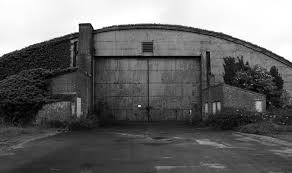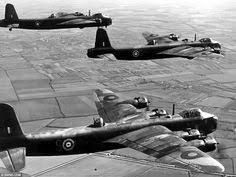
| DYSON |
Project Facts and Figures
| Project Value | |
| Project Duration | 11 Months |
| Services | 11 kV Infrastructure |
| Market Sector | Commercial and Indsutrial |
| 9 new substations to produce a new 11 kV and LV network to support the approx. 517 acre site |
| Length of 11 kV underground cabling: Approx. 12 KM |
| Total Installed capacity capable of providing approximately 14 MW of power |
| Current transformer capacity is totalled at 13.13 MVA |
| The LV switch panels installed by Powersystems come together to amass a total panel sections of 29 |
Dyson Hullavington Airfield
Powersystems has delivered the practical works for the design, supply, installation, testing and commissioning for the electrical infrastructure at Hullavington Airfield in Wiltshire, which will be a centre for research and development activities for the technology giant Dyson.
Opened in June 1937 RAF Hullavington was a Royal Airforce station mainly used for various training purposes. It was one of 28 ‘key’ sites identified in the Historic England guidance on Military Aviation Sites as those which represent the best-preserved airfield landscapes and the most historically significant groups of original buildings in England.
It was considered to be so important because it is probably the most representative surviving example of Royal Air Force architecture of the post 1934 “Expansion Period”, which was influenced by a conscious decision to improve the quality and planning of airfield buildings as a result of advice from the Royal Fine Arts Commission, including incorporation of Neo Georgian and Art Deco styles.
(Increasing national concern through the 1930s, over rearmament and the pace of environmental change had led the government to involve the Royal Fine Arts Commission, including distinguished architects such as Sir Edwin Lutyens, Sir Reginald Blomfield and Giles Gilbert Scott in the design of new air bases).
The planning of aircraft hangars and the flying field also demonstrated the first move towards the principle of perimeter dispersal of aircraft in order to limit potential damage done by enemy attack.
Hullavington’s initial major role was as an Aircraft Storage Unit. In 1940 the two type D hangars on the airfield accommodated the larger Stirling bombers.
During World War Two the main role of the airfield was as in training, particularly the Empire Central Flying School, set up in 1942, which provided training for instructors. Training continued to be important in the Post-war period until 1965 when active flying ceased and ground based Royal Air Force units predominated at the base.
The airfield was designated as a Conservation Area in 1992 by North Wiltshire District Council. Around 30 of the buildings on the site are included on the statutory National Heritage List.
Powersystems partnerships:
The electrical work was undertaken in partnership with Tercon, Skanska and Kier on behalf of the client, Dyson.



Dyson Hullavington Airfield major design considerations:
To meet the power demands across the 517-acre site, the substation capacity and cable loading across the site was a crucial part of information in order for Powersystems to design a robust private network for the client.
The main scope of work was to supply, install, test and commission nine 11 kV High Voltage (HV) and Low Voltage (LV) substations, 2 of these subsequently appointed by Kier and Skanska to install the infrastructure to the areas of the site under their construction.
Powersystems connected two separate ring feeders to maintain the site wide resilience, with an option of a third ring feeder for future development.
What the client wanted?
The client wanted HV and LV substation area in one complete package.
To meet the substation energisation dates which were on a constant moving program it was essential to maintain flexibility in order to design the network flow, electrical installation and energisation sequence ahead of time as well as adapting to the clients change of site requirements to ensure major milestones were achieved.
Health and safety is of utmost importance at Powersystems. This business standard informed multiple ideas on how to minimise or totally remove any working risk from daily practice.
Working on an open site like an airfield with high speed winds meant that design and safety considerations had to be applied in order to overcome moving and falling equipment.
A design of switch gear steel work and substation civil base was created to allow for the switch gear coupling, testing and installation to be completed in our very own workshop. Allowing for all work to be completed in a dry, safe and controlled environment. With just one offload operation into its final position onsite.
To support the main intake substation provision of a 400 kVA standby generator was installed to maintain a uninterrupted LV supply with automatic changeover.
How Powersystems helped?
Powersystems High voltage engineering were delighted to meet all of the critical milestones of this prestigious project. Enabling the client to begin their mobilisation into certain sections of the site and proceeding with their high priority research and development.
To meet the high and exacting standards of the client there was a special emphasis placed on maintaining the site aesthetic.
Maintaining the flow of work the supply chain management considerations were constantly reviewed and evaluated by Powersystems this allowed for the tier 2 specification transformer to be ordered and installed without delays.
All relevant site studies and calculations were completed by Powersystems, including a Soil Resistivity Report, Earthing Study, Protection Study, Substation Over Pressure Calculations, Cable Calculations and Losses. The earthing study was completed in house with all associated earthing network being designed and installed by Powersystems.
- Three productive Hangars
- Hangar 85 and Hangar 86
- Hangar 89 and Hangar 90
- Hangar 181
- New site wide HV and LV network
- Two 11 kV ring feeders operated with a normally open point
In Conclusion:
A brand new 11kV and LV network has been created to support the approx. 517 acre site.


Speak to Powersystems Today
We would love to hear from you and talk through your projects with you
